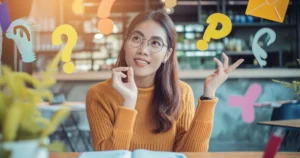
Cool English Greetings: Say “Hello” in 12 Different Ways
Greetings are essential aspects of communication that vary from one language to another. Saying “hi” or “hello” can be a simple gesture or utterance, but the way we say it can show our personality and respect for the other person.
“Hi” and “Hello” are very common English greetings that we learn from early childhood, regardless of our native language. When we meet someone for the first time, it is common that we greet them with a smile and we say “hi” or “hello.”
These English greetings are not new to us because they have been part of our daily lives and conversations. Surely “Hello” is a perfectly fine way to start a conversation.
Why are English Greetings Important?
English greetings are great contributors to smooth and meaningful conversations especially when meeting someone for the first time.
They are important because they can be tools for starting a new friendship, establishing connections, building strong and harmonious relationships, and creating a positive atmosphere with one another.
When learning a language, English greetings are important because they can help you show off your English vocabulary and set the tone for a positive interaction.
What unique English greetings do you know?
Remember: English greetings are not just verbally done but also shown through gestures.
Unique English Greetings: Say Hello in Different Ways
Are you tired of the same old “hello” and “hi” when meeting someone new? Leave a lasting impression to your new-found acquaintance with these unique English greetings that will set you apart from others.
Let’s learn some ways to greet someone creatively in different situations. The following are other ways to say “Hello” to someone.
◙ Informal/Friendly Situations
■ GESTURES
- Fist bump – this is an informal yet energetic way of saying “hello” or “hi” to someone that conveys friendliness and approachability. By a fist bump, you instantly create a sense of camaraderie with the other person.
- High-five – this is a fun way to add a playful twist to your greetings. This lighthearted gesture exhibits positivity and fosters a sense of connection. Whether you’re meeting a friend or a new acquaintance, the high five is sure to leave a smile on their face and create a memorable moment that sets the tone for your interaction.
- Hugs and cheek kisses – usually done with friends, these gestures are common English greetings that promote good relationship and close friendship.
■ VERBAL GREETINGS
- “Hey, what’s up?”
- “Yow!”
- “Howdy!”
- “Hey there!”
- “Hallow”
- “Long time no see!”
- “How’s life going on?”
- “What a delightful surprise to see you here! How are you doing today?”
Lorem ipsum dolor sit amet, consectetur adipiscing elit. Ut elit tellus, luctus nec ullamcorper mattis, pulvinar dapibus leo.


◙ Formal Situations
■ GESTURES
- Handshake – This is one of the very common English greetings exhibited in meeting new colleagues, business associates, clients, and influential people. The handshake shows formality and courtesy to the other person.
- Bow – this gesture is common in Japan and this signifies respect to the other person.
- Hand over heart – This refined and elegant gesture conveys sincerity and respect, making it ideal for professional settings or formal occasions. With your hand over your heart when greeting someone, you intend a genuine interest and create a sense of trust and authenticity in your interactions.
■ VERBAL GREETINGS
- “Good morning/afternoon/evening, it’s a pleasure to meet you!”
- “Charmed to meet you!”
- “It’s great to finally connect! I’ve been looking forward to meeting you.”
- “If I’m not mistaken, you’re [name], right? It’s lovely to meet you!”
- “I’m so glad I’ve finally met you. How do you do?”


Say “Hello” in Different Languages
Some countries have their own version of unique English greetings that can be learned by anybody. However, in some other countries, “hello” or “hi” doesn’t have an exact translation in their native language so they use these English greetings instead.
Chinese – “Ni Hao”
Japanese – “Konichiwa”
Indian – “Namaste”
Thai – “Sawadee”
South Korean – “Annyeonghaseyo”
Indonesian – “Halo”
Brazilian – “Ola”
Spanish – “Hola”
Vietnamese – “Xin Chao”
French – “Bonjour”
How do you say these English greetings in your own language?
Note: In the Philippines, we don’t have the exact translation of these words unlike in other Asian countries. Moreover, when we say “Hello” we tend to add it with our translation of “How are you” or “Kumusta ka?” That then makes the thought sensible and intelligible.
How to Respond to English Greetings
Generally, when someone greets us with “hi” or “hello” we respond with the same exact words or vice versa. In daily English conversations, the question “How are you?” is added to “hi” or “hello” where we respond with “I’m fine, thank you” or “Very well, thanks.”
Responses to English greetings vary in situations. “How do you do?” is used in formal occasions and the response would be “How do you do?” In the recent years, this greeting has not been used by the current generation because of the trend in language.
A firm handshake is usually accompanied by a greeting like “Pleased to meet you” or “Nice to meet you.” This is commonly observed in formal situations like business meetings or conferences. The best reply for this “Pleased to meet you, too” or “It’s nice to meet you, too.”
In informal or friendly situations, saying “Hey, what’s up?” to greet a friend is common. The shortest reply to this could be “Not bad” or “Fine.” These responses are not appropriate in formal situations because they sound so unprofessional.
Another English greeting in informal occasions is “Oh, you’re here!” and the response can be “Yeah, you too!” or “well, obviously.” Remember that these expressions are only applicable in casual conversations and not in formal ones.
Responding appropriately in English greetings is one way to bridge the gap in communication. Observing proper response is good to avoid conflict or misinterpretation of your intended message. Always consider the person you are talking to.
How to Address Someone You Meet for the First Time
When we meet someone for the first time, we start with a polite greeting and address them with either “Sir” or “Madam.” This is a courteous way to address them properly regardless of their social status.
If we know them already, we can address them according to their titles like “Mr.”, “Mrs.”, “Miss”, “Dr.”, “Atty.”, etc. It depends on who we are talking to. It sometimes feels awkward to address them in their titles so we often tend to stick with “Sir” or “Madam.”
On the other hand, a friendly or casual address doesn’t matter because it actually depends on how people do it, so long as they are comfortable and do not offend the other person. For example, in the Philippines, friends address each other as “Friend,” or “Beshy,” which are actually informal at all.
“Sis” or “Bro” are also casual addresses to friends and are present in different countries. In some English speaking countries, they don’t usually call people with their titles but with their first name (e.g. USA) like “John”, “Tom”, etc.
Proper salutation is important in English greetings. It shows respect and courtesy towards the other person. Introduce yourself confidently, respond to their greetings appropriately, and address them properly to have an effective relationship building.

Conclusion
Differentiating your English greetings can make interactions more engaging and memorable. The next time you meet someone, consider trying out a new way to say hello and see how it brightens their day! Respond appropriately and address them with politeness.
Remember, confidence is key! So go forth, greet the world with these English greetings, and impress everyone you meet.




